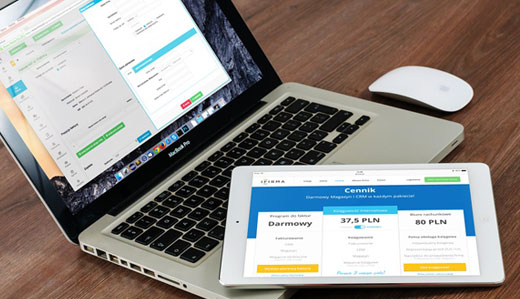

Guidelines for exercises during pregnancy

Contraindications
1st Trimester Exercises(1 to 12 weeks)
2nd Trimester Exercises(13 to 26 weeks)
3rd Trimester Exercises (27 to 40 weeks)
Types Of Antenatal Exercises:
The different types of antenatal exercises that can be performed are:
A) Yoga: Yoga is considered one of the safest forms of exercise that can be performed antenatally. Different stretching exercises can give relief to back pain, rib pain, hip, and joint pain that is commonly experienced during pregnancy. Apart from this, meditation can keep the pregnant lady mentally healthy.
B) Aerobics: Low impact aerobics have to be performed during pregnancy. These aerobics benefit in strengthening the lungs and heart, maintaining balance and muscle tone, reduce the stress on the joints. Aerobics has to be performed only in the presence of an instructor. A small lapse during exercising can lead to severe health complications.
C) Pelvic Floor Exercises: The Pelvic floor exercises, also called Kegels, are suitable for strengthening the pelvic muscles. This helps in the safe and secure movement of the baby during delivery.
D) Swimming: Swimming is considered one of the safest antenatal exercises. The benefits of swimming include relief from morning sickness, various joint pains. Swimming also enhances sleep during the night. One important thing during pregnancy is that there should be continuous blood flow to the fetus, swimming can ensure a constant blood flow throughout the pregnancy.
E) Brisk walking and Cycling: These are considered the basic antenatal exercises. Brisk walking provides a cardiovascular workout, while cycling help in reducing the ankle and joint pains that will appear during pregnancy.


There Are Three Types Of Breathing Exercises
(A) Abdominal Breathing:
How to Perform:
1) Breathe in through the nose and feel the expansion of the abdomen.
2) Now, slowly breathe out through the mouth.
Benefits:

(B) Lower Costal Breathing:
How to Perform:
1) Place your hands on the lower rib cage and breathe in through the nose and feel the expansion of the chest.
2) Now, gently exhale through the mouth.
Benefits:
(C) Apical Breathing:
How to Perform:
1) Cross your hands below the clavicles with the mouth slightly open.
2) Inhale through nose and mouth.
3) Now, exhale gently as if trying to flicker the flame of the candle flame without blowing it out. You can feel the upper lungs moving slightly up and down.
4) During contractions, try to relax and control the breathing.
Benefits:
How to Perform:
1) Sit on the chair with your back against the seatback.
2) Start with one ankle and turn the foot upwards and downwards. Repeat this process ten times.
3) Do the same activity with the other leg.
Benefits:

How to Perform:
1) Sit on the chair with your back against the seatback and breathe naturally.
2) Now, tighten the abdomen and press the pelvis downwards to flatten your lower back against the seatback. Hold to this position for 5 seconds and then relax.
Benefits:

How to Perform:
1) Sit on a stable low chair against the wall and slowly spread your thighs sideways and hold on to the position for 10 seconds and relax.
2) Redo the process for ten times of 3 sets.
Benefits:

How to Perform:
1) Sit on a chair with the back against the wall.
2) Now, inhale deeply and tighten the pelvic muscle, i.e., vaginal, urethral, and anal tissue and hold for 10 seconds.
3) Release the muscles by exhaling. Take a rest for 60 seconds and repeat the process.
4) The tricky part of performing this exercise is to find the pelvic muscles. This can be found by withholding urination or defecation. The muscle that helps in withholding the urine is the pelvis muscle.
Benefits:

How to Perform:
1) This is the basic and self-explanatory exercise that can be performed. This exercise doesn’t need much of an introduction and explanation.
2) Wear comfortable shoes and go on for a morning walk for 30 minutes.
Benefits:

How to Perform:
1) Lie on the mat with your forehead facing the ground and feet together.
2) Now raise your chest and head slightly and extend the arms perpendicular to the body and the palms facing downwards.
3) Lift your body and hold on for 120 seconds.
4) Come back to normal position and relax for 5 minutes.
5) Do three sets of pilates every day.
Benefits:

How to Perform:
1) Stand on the ground with shoulders and bottom against the wall.
2) By keeping the knees soft, pull the tummy button towards the spine so that the back flattens against the wall.
3) Hold to this position for 5 seconds, release and repeat the process ten times.
Benefits:

How to Perform:
1) Stand straight, feet slightly wide open, and toes pointed out.
2) Bend your knees and push your hips down as if you are sitting on the chair.
3) Dropdown until your thighs are parallel to the ground, and knees bowed slightly outward.
4) Make sure that you don’t lean forward while doing this exercise.
5) Come back to the original position and continue doing 20 reps.
Benefits:

Antenatal exercises are exercises that are performed before delivery. Performing these exercises are quite safe and very beneficial for the expecting mother and the baby present inside the womb. There are a lot of antenatal exercises that can be performed but choose only those exercises that you are capable of performing. Do the exercises in a safe and healthy environment duly following the tips mentioned above and precautions. It is better to consult your doctor before planning to do antenatal exercises.


First Floor, Apple Plaza,
Jagana Road, Gathaman Gate Rd,
Palanpur, Gujarat 385001
Kalyan Women's Hospital © 2021 | Designed & Developed By : www.onwebbox.com